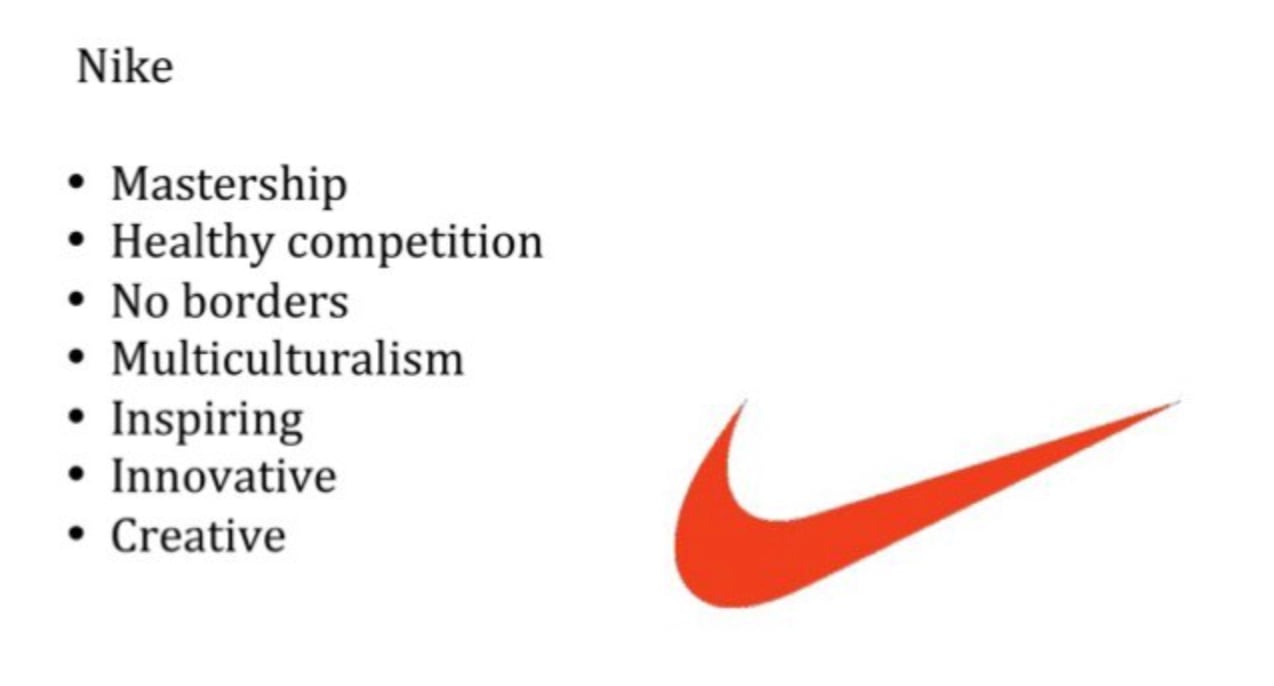Which of the following is part of a business’s brand identity?
- The business’s name
- The business’s logo
- The business’s main colors and font type used (whether in the logo or not)
- The choice of words and visual elements used throughout the business’s website and ads
It turns out that the correct answer is all of the above! Brand identity goes well beyond the company logo and other associated attributes—it also includes the intent behind them.
What Is Brand Identity?
To understand what brand identity is, They Make Design’s explanation is a useful place to start:
“The best way to think about a brand identity is to imagine the brand as a person and then consider how that person would express themselves.” (Source.)
The way a business expresses itself to the public certainly includes things like its logo, specific colors, and motto. But it’s also equally relevant to think about the business values and beliefs that give meaning to its logo, colors, etc. Why a company chose a specific image for its logo or specific words for its motto gets at the core of how that business expresses itself.

And when you consider the “why” behind these assets, you can begin to understand the business’s “personality” (continuing They Make Design’s metaphor). Why would a business want to have a personality? Because doing so creates an image of what the business “is” to the public, and it’s ultimately how it attracts, relates to, and connects with its consumers.
I recently subscribed to Patagonia’s email list. In addition to sending emails notifying me of new products or sales, they also regularly send emails that solely discuss conservation issues or highlight how their clothes and outerwear are sustainably made.
At first glance, it’s surprising to receive these kinds of emails from a for-profit business. But when you think about brand identity, it’s not surprising at all.
- These types of emails inform the “why” behind Patagonia’s sunset/mountain logo, clothing design, and clothing materials.
- They give Patagonia a voice and make it stand out and connect with like-minded people.
- They help to provide authority to its clothing line. After all, a company that is so devoted to nature certainly must know how to make clothing that can keep you warm, dry, and comfortable when you’re outdoors.
How to Create a Clear Brand Identity
Now that we’ve established why it’s important to know and actively project your business’s brand identity, follow these steps to create an identity for your business or reevaluate your current one.
1. Define What Your Business Is Through a Value Proposition and Mission Statement
It’s a good business practice in general to define your business’s value proposition and write an effective mission statement. It differentiates your organization from your competitors, it creates a compelling reason why consumers should choose your business, and it sets a “north star” that you and your employees can use to guide your business decisions and actions.
These business assets are also essential when creating your brand identity. They help to convey your company’s values, and in the process give life to your business’s personality. They also enable your company to project a unique voice that stands out from the other organizations in your industry.
2. Thoroughly Understand Who Your Target Customer Is
Research and discover the attributes and dispositions of the target audience to whom you want to reach. By thoroughly knowing their characteristics, you can then craft language and visual cues that speak to that specific group. People are attracted to companies that project the same image and that hold the same views as they do—ensure that your brand identity speaks directly to the group who is most likely to purchase your products or services.
3. Create a Logo, Brand Language, and Audio Brand That Your Target Customer Group Will Recognize
Once you determine your business’s values and know who your customers are, transfer that information nonverbally into your logo and verbally into your mottos and advertisements.
Consider the Patagonia example. Their logo is a silhouette of a mountain range against the backdrop of a colorful sky. You can tell exactly right off the bat who they’re trying to appeal to and reach. If you’re an avid hiker, outdoor sports enthusiast, camper, or just like being in nature, you’ve certainly seen (and love) the colorful skies of a sunrise or sunset.

While your logo should communicate your brand identity subconsciously, things like your motto, tagline, website copy, and ads can make it much more conspicuous. If you understand the personalities of your target audience(s), utilize images of people that they would strive to be like and phrases that they would understand and even say themselves. Your brand identity’s language should make it clear to potential buyers that they are joining a larger community of people who are exactly like them—or who they aspire to be.
A final, and rather overlooked, area to address is how your business sounds. Think about it: Have you ever given much thought to the question, what does my business sound like? Everything from the background music of your ads to the music on hold you play on your phone system evokes a specific image or feeling in the mind of your consumers. Even something like an auto attendant factors in here—a clear and orderly recording will leave your callers with a much different feeling than one that is cluttered, confusing, and leads them in circles. Your business’s “audio branding” is a key part of your brand identity, so give it the attention it deserves.
4. Display Your Brand Identity Consistently and in a Coordinated Manner
Once you’ve figured out the language, imagery, and tone that matches your target audience, use it consistently throughout your website, ads, and social media posts. Don’t create different ads for different “personalities”—you run the risk of making your business come across as fake, disingenuous, and inauthentic to viewers who see all of them. Coordinated messaging across your Internet presence, marketing, and advertising demonstrates to your audience that you genuinely are what you say you are.

5. Monitor What Your Customers Are Saying About You
Finally, continuously monitor what people are saying about your business on social media, online review sites, and surveys. Obviously, if your brand identity is clear and authoritative, then people will reflect that in their responses. If you find that your consumers are misreading your brand or unsure of what it stands for, then you know it’s time to adjust your messaging so your business’s personality shines through.
An Effective Brand Identity Will Attract Customers to You
“A good product generates customers, but a good brand generates advocates.” (Source.)
Why should you take the time to craft a coherent and consistent brand identity? Because as the above quote states, a good brand attracts people who are like-minded, can become repeat buyers, and will spread the word about your business to their family and friends.

